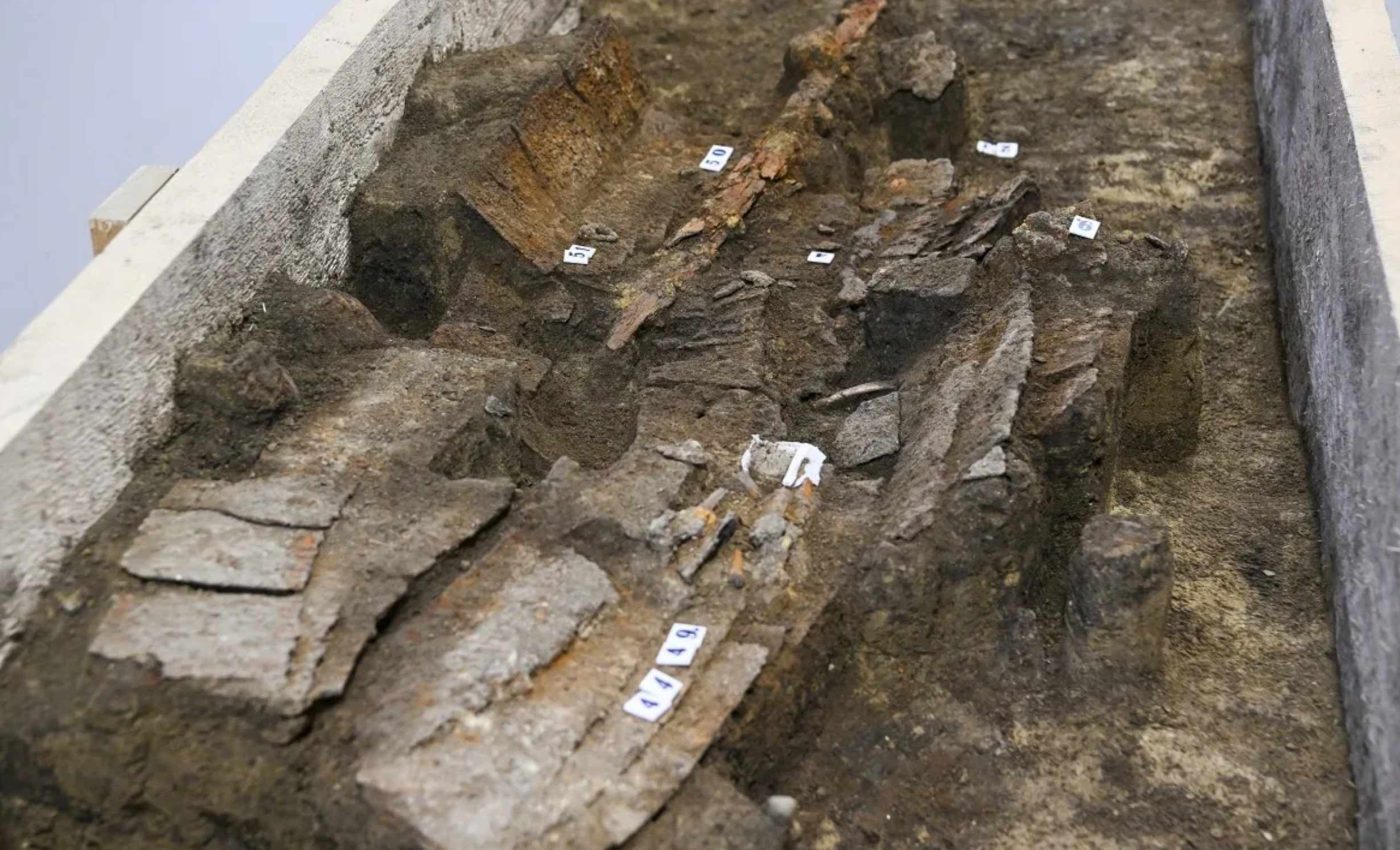
Archaeologists discover the tomb and sword of a warrior from 1,300 years ago
About 1,300 years ago, an elite warrior was buried on a low rise near today’s city of Székesfehérvár in central Hungary. Archaeologists have just uncovered his tomb containing an iron sword so rare that they say almost no similar finds exist worldwide.
The grave belongs to the Pannonian Avars, a powerful steppe people who ruled this region in the late 600s. Their kingdom left rich cemeteries but few written clues, so every new burial with weapons and jewelry adds another piece to their story.
Satellite images reveal hidden grave
Work at the site is led by the Szent István Király Museum in Székesfehérvár. The museum is a regional institution that cares for thousands of local finds. Its archaeologists focus on early medieval Hungary and the Avar period, linking fieldwork with new digital survey tools.
The grave was first spotted in satellite photos. That work is part of satellite archaeology, a method that uses images from orbit to detect hidden burial sites.
In fields that hide old graves, crops often grow a little taller or greener where the soil was once disturbed. Those faint differences show up clearly in high-resolution images, guiding teams to the most promising spots.
Across Hungary, the same approach has revealed whole Avar cemeteries beneath modern farmland that once seemed ordinary.
Archaeologists are only now excavating many of those sites, so this Avar warrior and sword are probably the first of many new stories.
A high status Avar warrior
Inside the tomb, archaeologists uncovered the curved saber alongside silver belt fittings, beaded earrings, gilded hair ornaments, a long knife, and iron arrowheads.
These grave goods, objects buried with the dead as markers of status or belief, suggest that the man ranked high in his community.
The long, slightly curved blade is the kind of saber most often used by warriors on horseback in the early Middle Ages. Paired with arrows from a leather quiver, it points to a fighter who rode into battle instead of fighting on foot.
For all that wealth, the burial was not left in peace by unknown hands. His arms and legs still lay in order, but looters had “ravaged” his head, chest, and abdomen, according to the museum statement.
Conservators now face the challenge of stabilizing the iron weapon after so many centuries underground and preparing it for display.
To prevent the fragile blade from crumbling, they lifted it from the grave in a wooden cradle that can travel straight into the lab.
Who were the mysterious Pannonian Avars
From the sixth century onward, the Avars lived across the Carpathian Basin and linked Hungary and its neighbors into wider steppe networks. Their rulers headed the Avar Khaganate, a steppe empire that ruled Central Europe for generations, linking communities of diverse origins.
Historian Walter Pohl’s book describes how this empire struggled with Byzantines and other neighbors before losing power around the early 800s.
That long story sets the stage for finds like this warrior’s grave, which shows how imperial politics played out in the lives of people.
A recent genetic study notes that archaeologists have already excavated roughly 100,000 Avar graves across more than 600 sites in the Carpathian Basin.
Most are simpler than this warrior’s tomb, yet taken together they show how far Avar power and culture spread across the landscape.
That genetic work also compared early Avar elites to older populations from the Mongolian steppe and nearby regions. It found that many high-status people carried Northeast Asian ancestry, suggesting that part of the elite had roots in eastern Asia.
DNA exposes family power lines
A 2024 study that examined 424 people from four Avar cemeteries reconstructed family trees stretching across nine generations.
It showed a patrilineal system with patrilocality, a pattern where wives moved to live in their husband’s community while men stayed put.
The same analysis found that women often came from more distant backgrounds than the men buried beside them.
That pattern helps explain why finds like this warrior’s grave include jewelry and ornaments that also traveled across long distances.
In several elite cemeteries, the same Y chromosome line shows up again and again in male skeletons. That kind of pattern shows how an Avar warrior aristocracy tied authority and fine swords tightly to certain families.
The Avar sword that changes history
The rusty Székesfehérvár sword reveals how Avar blades were used and valued through its shape and grave placement. As conservators clean away soil and corrosion, they will see whether the smith copied steppe styles, borrowed Byzantine techniques, or blended influences in design.
The Cemeteries-from-Space project has already pinpointed many more buried Avar cemeteries scattered across the Great Hungarian Plain.
Each excavation can connect the dots between what genetics reveals in the lab and what swords, brooches, and animal bones reveal in the field.
In the new tomb, the mix of weapons, belt sets, and delicate jewelry hints at both battle and status display. When researchers combine those objects with ancient DNA, genetic material preserved in dead bones, they trace this man’s links to families in graves nearby.
To visitors seeing it in a glass case, the Székesfehérvár saber may look plain, even though it once carried deep meaning in Avar society.
The study is published in Cell.
Image credit: Déri Museum/Déri Museum.
—–
Like what you read? Subscribe to our newsletter for engaging articles, exclusive content, and the latest updates.
Check us out on EarthSnap, a free app brought to you by Eric Ralls and Earth.com.
—–













